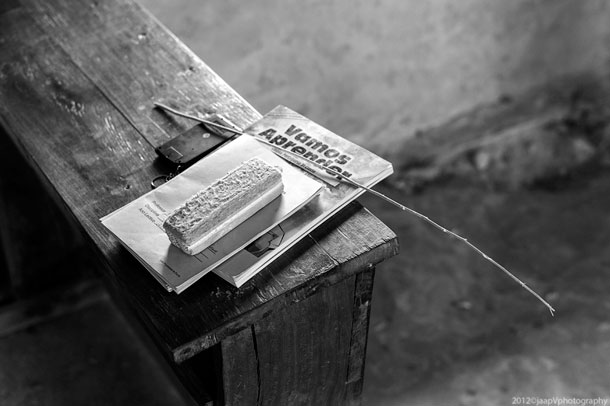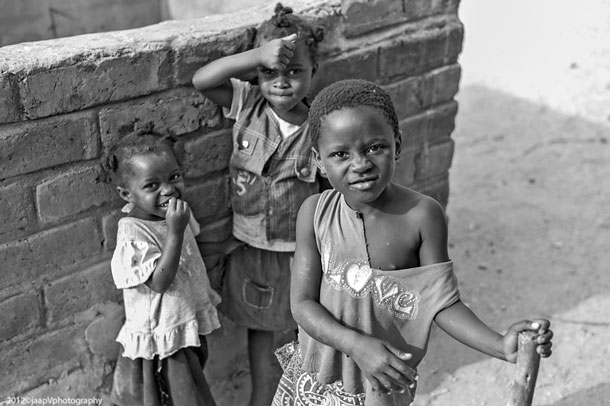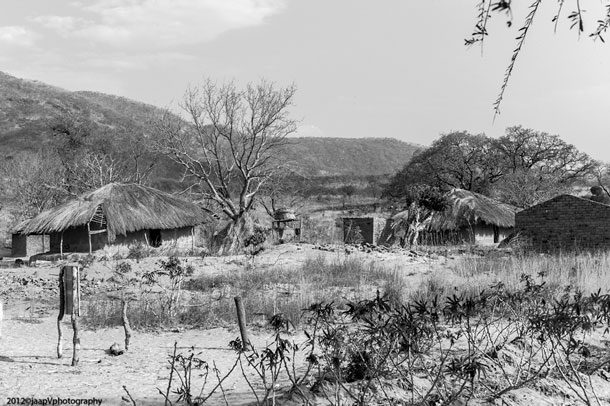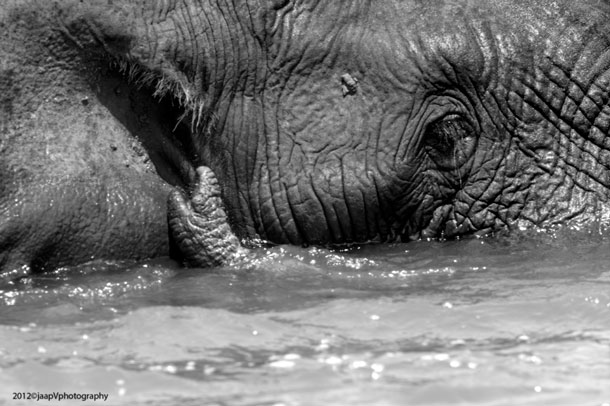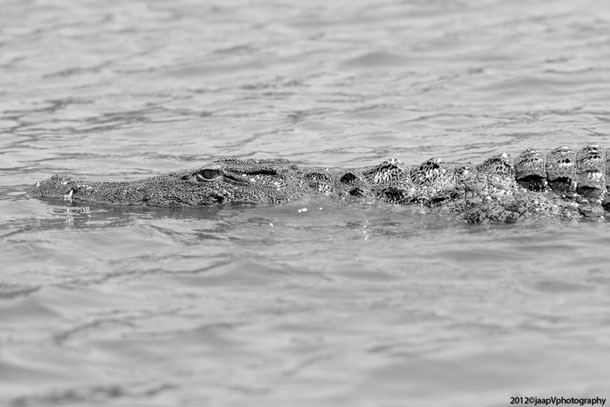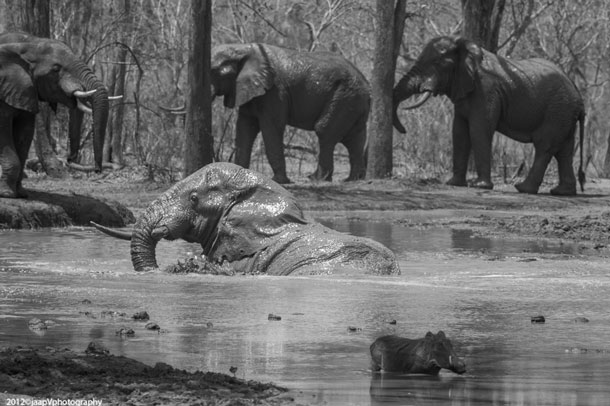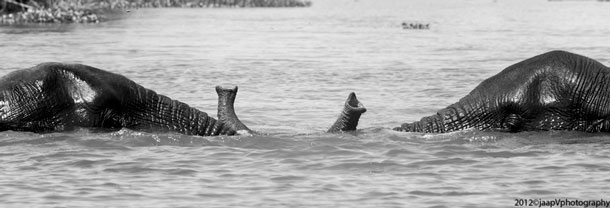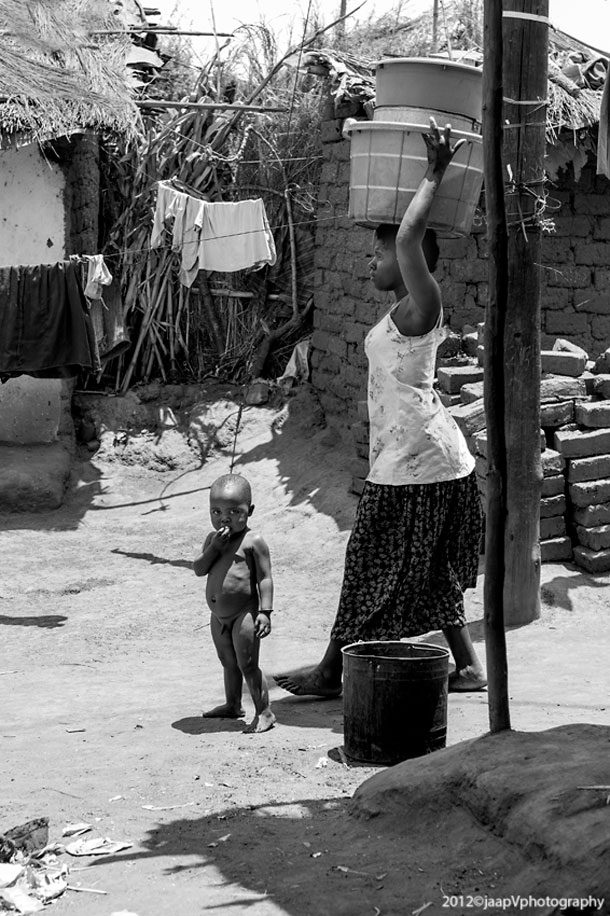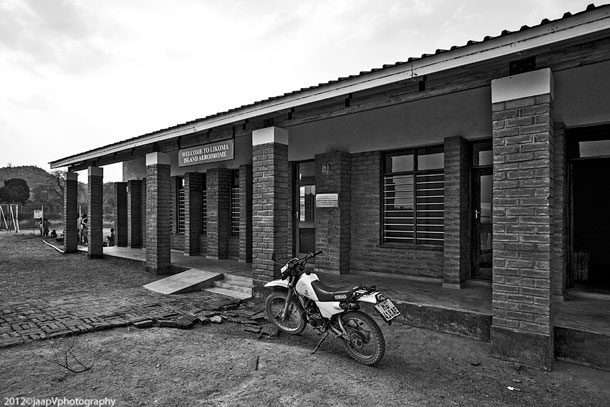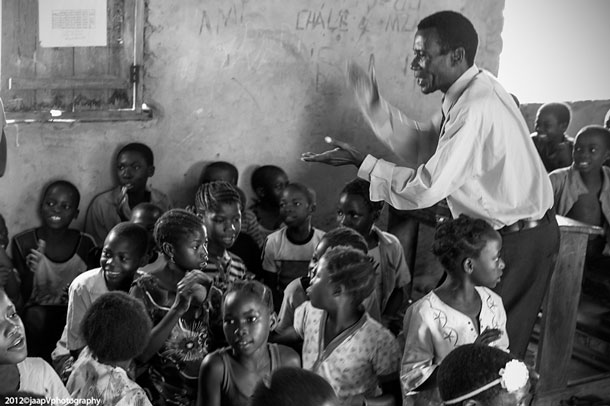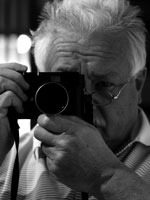
Africa has always been a bit of a passion for me. There are the people, landscapes, the safari destinations, and so forth. I have been coming there for more than twenty year, always carrying my camera. So when I got one of the first Leica Monochroms a week before my departure this year, I decided to take this camera.
Of course took my trusty M9 as well, just to make sure — and to keep my wife, who prefers color photography, happy.
There are two main aspects to travel photography in Africa, people, landscape and town, and then the safari-type wildlife. A rangefinder is, of course, an ideal tool for the former, but the latter presents a problem, as the longest regular focal length cannot be more than 135mm.
Fortunately Leica did provide a solution in the far past, and as retro-compatability is one of the hallmarks of the M system, the historical accessories fit even the newest cameras.
To use long lenses on a rangefinder one needs the Visoflex, a housing that turns the camera into an SLR, and the lenses provided for the Visoflex. The new Leica M will be a game changer in that respect. As it offers live view and a stick-on EVF, just about any lens in the world will work on that camera.
So, with this in mind I took the Monochrom, the M9, the Visoflex and the following lenses:
Super-Elmar 18, Summilux 24, Summilux 50 asph, Elmarit-M 90, Apo-Telyt 135, Telyt-V 280/4.8 and Telyt-V 400/5.6. The latter lenses were interchangeable lens heads mounted on a (again vintage) Televit rapid-focus grip.
If one would take this collection for a modern DSLR, it would take a trolley to transport and it would not even be allowed on a light aircraft. With the Leica M system, the shorter lenses and camera bodies fitted into a the small Billingham “for Leica” bag whilst the long lenses and odds and ends easily found their place in an old Mini-Trekker backpack, together with a MacBook Air 11″. The total weight was considerably less than 15 kgs, including my binoculars.
The People
To photograph in Africa is easy. People, in general, love to have their photograph taken, one can shoot any number of children without any eyebrows raised, and the subjects are endless. The main problem is the light. The sun is straight overhead and harsh for most of the day, people will sit in the deep shade or indoors, sunset is at six and there is hardly any artificial light in the night.
The Monochrom is a very useful camera in those circumstances. Its dynamic range permits exposing for the highlights and pulling up a wealth of detail from the shadows and the more than usable ISO 10,000 is a boon in the dark. Just DON’T overexpose. A highlight blown is lost forever.
The images here were made in the North West province of Mozambique, on Lake Nyassa and in Malawi, the Kasungu area and the township of Lilongwe. We have known the people there for over a decade, and we were not intruding. They were happy to welcome us. Some were taken in the school, some in the village.
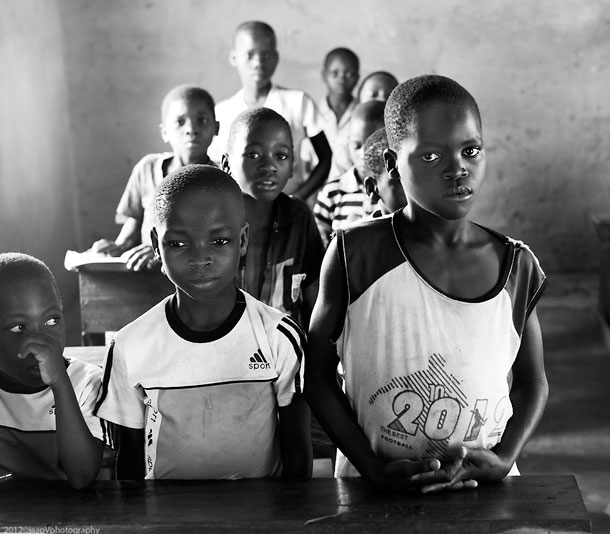
The Safari Shots
I have twenty years’ worth of lion, elephant and multi-mammate mouse shots in boxes and on HDDs — and yes, on my wall –, all in color. It was refreshing to go back to the roots of safari photography. There are few images to be found from the fifties and before, and for many animals color takes away from the strength of the shot.
Most shots were taken with the 280-V 4.8 version iii, which dates back to the 1980s, and the combo was very sharp, far more so than the color shots with this lens.
The Visoflex, which is a rather simple and superannuated “SLR,” was a joy to focus, the only drawback being the shutter lag.
With some anticipation this could be overcome, but especially with the heavy 400 there was a risk of camera droop. I tend not to use tripods as they are a hassle to use in a vehicle and a pain to carry when walking in 40°C. The Televit grip with shoulder stock allows stable shooting at amazingly slow shutterspeeds.
The files out of the camera are exceptional. On first impression they look flat, but simple post-processing will bring out an incredible reserve in contrast and tonal range.
Although they are “just” 18MP in resolution — which is ample for any use one can imagine — the acuity matches or surpasses anything that is on the market. As it was put to me by a well-known guru: each pixel on the sensor ends one-to-one up on the print. That is the basic learning curve of the camera — getting the overdose of quality on to the paper. I’m working at it.
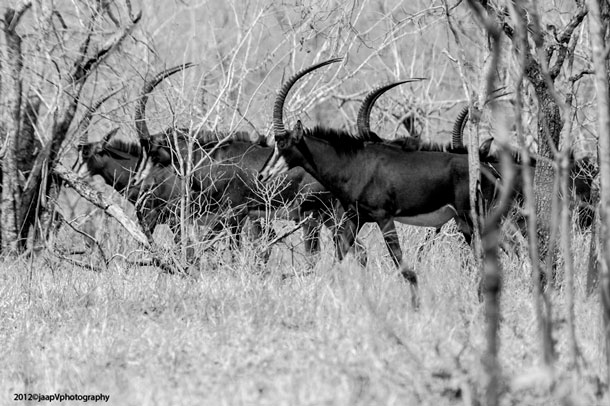
I do most corrections in ACR. Often the highlights need to be pulled down and the blacks intensified. The shadow slider can be used at will, the amount of detail one can bring out is amazing.
The Clarity slider has a strong effect. Use with care.
In CS 6 I do the rest of the post-processing. Fine-tuning Levels and Curves, cropping, spotting with the healing brush, etc., and judicious bringing out of detail with smart sharpen prior to printing.
Many advise not to sharpen M Monochrom files, but they have huge reserves of detail. It may not always look pretty on the screen, but the print will benefit.
Obviously the files do not allow color channel manipulation.
Like film, good results are obtained by the use of filters. Most shots here were taken with middle-yellow, which is a good general-use filter. However, it is well worth experimenting with no filter and green or orange filters. For shallow DOF affectionados, a strong ND filter is a must. The base ISO of the camera is 320 ISO.
Malawi is an unknown wildlife destination so the parks are not overrun — as often as not you will be the only visitor. Although they do not offer the big game density of the well-known tourist attractions in Zambia, South Africa and Botswana, they are extremely interesting.
I chose Majete Wildlife Reserve and Liwonde National Park. Both are Big Five parks, but some animals are seldom seen. There have never been giraffes in Malawi.
Majete is a beautiful reserve, on the rapids of the river Shire which flows from Lake Malawi into the Zambesi. It has been restocked and well protected over the last decade by African Parks in conjunction with Malawi’s wildlife department. Despite having basically all major wildlife, the main attraction are the rarer antelopes like sable and eland which are quite approachable, and rare and plentiful birdlife.
Liwonde has long been — and probably still is — Malawí’s premier park on the wide and flowing part of the Shire, but because it is not too large, there are some subsistence poaching problems.
The main attraction here is undoubtely the river experience with huge crocodiles and a multitude of hippos, abundant bird life, and above all the riparian elephants that have made the river the centrepoint of their existence. Black rhino is easily seen, even on foot (I was unlucky though, unphotographable in the distance).
Both were very satisfying and great for photography.
Mkulumadzi Lodge in Majete is particularly well geared to photographers’ needs, the vehicles are equipped with camera trays and beanbags, the guides (thanks Samuel!) will position the vehicle perfectly, batteries can be charged inside the chalets and the lodge manager is a keen photographer himself.
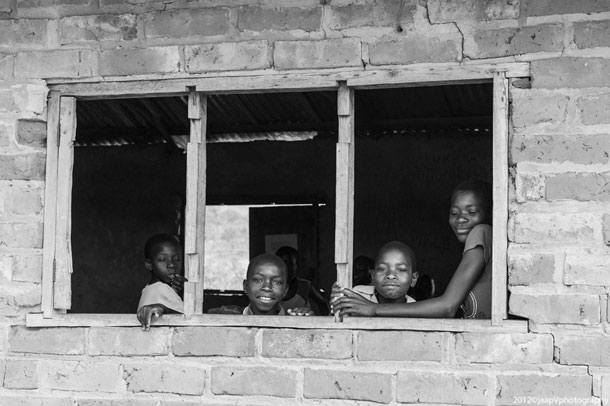
Conclusion
Is the Monochrom a suitable travel camera?
If one appreciates black-and-white images, without doubt. The camera is clearly more capable than a Bayer filtered camera and Photoshop conversion to monochrome (although that can produce stunning black-and-white as well) and it forces the photographer to see in monochrome.
Post-processing is slightly different from the M9, but basically more simple.
Is the Monochrom a suitable wildlife camera?
In theory — no, but the drawbacks can be overcome with a sufficiently geeky mindset. In that case there is little that speaks against it, and some considerations recommend the effort. There are so many ubiquitous color shots of sleeping Lions and mock-charging elephants out there that the black-and-white approach is quite refreshing. The image quality is stunning, especially in print.
Would I travel with just the Monochrom?
No. The combination of this camera and an M9 is just about perfect. Some subjects just need color.
Travelling in Africa
Central Africa is one of the safest travel areas in the world for tourists. Opposed to South and East Africa, theft and muggings are still rare and the main crime one will come up against is pilfering. Leicas are far less attractive than point-and-shoots or DSLRs. But take care not to have your SD cards swiped — or your sunglasses.
In general people love to be photographed, but don’t shoot if they indicate that they don’t want you to. Children can be photographed without any problem — in fact it is hard to avoid doing so.
If somebody gives their address for a print — send it! You will find nearly everybody you meet very open and welcoming — provided you treat them in the same way.
Don’t even appear to take photographs of uniformed officials without prior permission and don’t photograph miltary or police subjects.
If you get a chance to visit a local school or orphanage, it is a great photo opportunity for you and a chance for them to gain a sponsor, so take it.
Self-drive is possible but not advised. Roads are often unpaved, signposts rare and there are people, dogs, cows and goats walking everywhere in large numbers, even on the main roads and at night (when you should not be driving at all). Renting a car is expensive — a driver is not.
Upmarket Safari camps offer the rental of a private vehicle and guide. Expensive but highly recommended for photography. Do not expect to photograph much when walking. On the other hand I have taken some great shots of big game on walks over the years.
+++ You can order the Leica M Monochrom from Amazon, B&H or Adorama.
For any questions on the Leica Monochrom, Africa and photography, Jaap Vleeskruijer can be contacted through his website www.jaapvphotography.eu.
